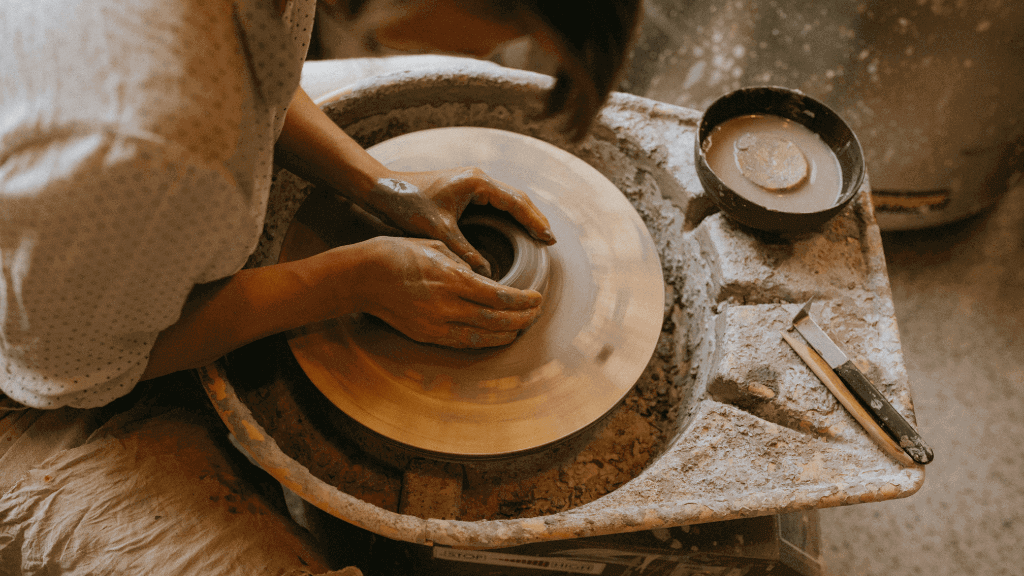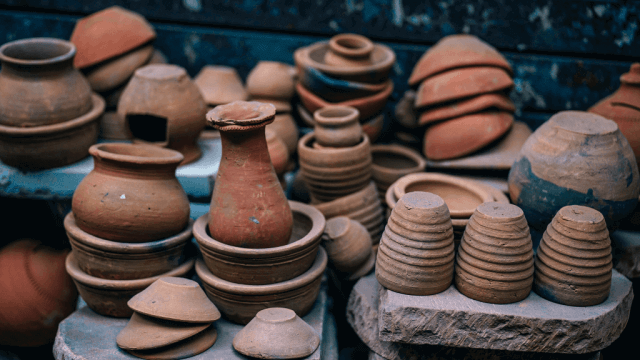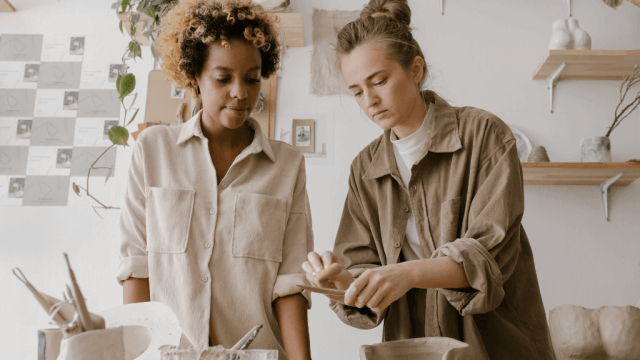The cost to paint pottery varies based on several factors, including the size and type of the pottery piece, the studio or venue’s pricing, and geographical location. Generally, studios charge a fee (ranging from $5 to $25) that covers paints, brushes, and firing in addition to the cost of the pottery piece itself (which can range from $10 to $100 or more). The total cost can be anywhere from $15 to over $125. It’s always best to check with local pottery painting studios for specific pricing in your area.
How Much Does Pottery Painting Cost? How Much Does Painting Pottery Cost?
Pottery painting prices and costs can be segmented into several key components, offering a clearer picture of the potential expenses:
-
Pottery Piece Cost: The base price of the ceramic piece is one of the main components of the overall cost. The variety is vast – from mugs, plates, and bowls to intricate figurines and vases. Small items can start as low as $5-$15, while larger or more detailed pieces can range from $50 to $100 or even higher.
-
Studio Fee: Many pottery painting studios charge a separate studio fee, which typically covers the essentials like paint, brushes, glazing, and the firing process. Depending on the studio’s pricing structure, this fee can range between $5 to $25. Some studios may offer package deals or promotions, especially for group events or parties.
-
Paints and Glazes: If you’re painting pottery at home and not in a studio, you must purchase paints or glazes. Ceramic glazes suitable for kiln firing can range from $5 to $25 or more per bottle, depending on brand and quality. There are also specialty glazes that may come at a premium.
-
Kiln Firing: Firing the pottery in a kiln is crucial for setting the glaze, ensuring durability, and achieving the desired finish. Some studios include this in their studio fee, but if you do it independently, firing at a separate facility could cost between $10 to $50 per piece, based on size and firing time.
-
Additional Supplies: Tools like sponges, detailing brushes, stencils, or other decorative elements might come with extra charges in a studio or be an added expense if you paint at home.
-
Geographical Location: The cost of pottery painting can also vary by region. Urban areas or upscale studios might charge more than rural or casual studios.
-
Classes or Workshops: If you’re new to pottery painting and wish to take a class or workshop, this can be an added expense. These sessions can range from $20 to $100+, depending on the instructor’s expertise and the class duration.
In summary, while a basic pottery painting session might cost as little as $15-$30, more elaborate projects or additional services can significantly increase the cost. It’s always a good idea to research local studios, compare prices, and budget for any extras you might want to include in your pottery painting experience.
How long does it take to paint a piece of pottery?
It typically takes 1 to 3 hours to paint a piece of pottery, depending on the size and intricacy of the design. This duration can vary based on an individual’s experience and the detail level of the artwork. After painting, the pottery usually requires additional time for drying and firing, which can extend the overall completion time.
What is it called to paint pottery?
Painting pottery is often called “ceramic glazing” or simply “glazing.” Glazing involves applying a special paint known as a glaze to a ceramic piece, which produces a glossy, protective finish on the surface when fired in a kiln.
Do you need a kiln to paint pottery?
If you’re using traditional ceramic glazes, a kiln is required to fire and set the glaze on pottery, giving it a durable and glossy finish. However, alternative paints like acrylics can be used on pottery without needing a kiln, though they might not be as durable or food-safe.
What kind of paint should I use on pottery?
For traditional pottery painting, you should use ceramic glazes formulated explicitly for firing in a kiln resulting in a durable, glossy finish. If you’re looking for a non-kiln alternative, acrylic paints can be used for decorative purposes. However, always ensure the paint is appropriate for your intended use, especially if the pottery will be used for food or drink.
Are there any additional costs involved, such as firing or glazing fees?
Yes, additional costs are involved with fire-rated glazing, such as insurance and taxes, filing fees, and window sprinkler installation costs.
Do different pottery studios or artists have varying pricing structures for painting pottery?
Different pottery studios and artists have varying pricing structures for painting pottery. Prices may depend on the chosen piece, with some starting at just $5 while others may cost more. Studios may also need additional supplies such as clay, glaze, and brushes, which can add to the overall cost. The average price per square foot for a studio is around $19. Additionally, some studios offer a fully equipped pottery studio with a master potter conducting classes.
Are there any ways to save money on painting pottery, such as using coupons or purchasing packages?
There are several ways to save money on painting pottery, such as using coupons, purchasing packages, and joining rewards programs. Additionally, buying in bulk and DIYing canvases can help reduce costs.
Can you give examples of typical pricing for painting pottery, such as per hour or piece?
Typical pricing for painting pottery can vary depending on the studio, but generally, there is a studio fee of around $10 per painter and then a cost per piece ranging from $20-$30. Some studios may also offer specialty glazes for an additional cost. It takes to complete a piece, which can range from 1-2 hours, though some studios may offer extended time slots if needed.











